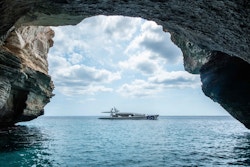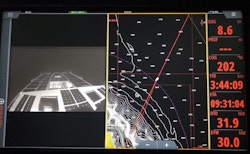Saint-Tropez – Balearic Islands: fast and low cost sailing
Wind from the North-North-West sector established at 25 knots (45 km/h), climbing 30 knots (55 km/h) over approximately twenty hours, with gusts of 35 knots (65 km/h), allowed the first hydrogen catamaran to make a beautiful crossing from Saint-Tropez to the island of Menorca in the Balearic archipelago (Spain).

“Over and above solar energy, which was of major importance during this trip around the Mediterranean, the wind was extremely favourable for the vessel as it uses natural energy that does not require masts or sails, explains Victorien Erussard, Energy Observer Captain. As soon as the wind exceeds a 90° angle of actual wind, energy consumption decreases considerably despite the low aerodynamic drag of the boat. The use of wind energy is annoying. I’m really counting on it for the remainder of our expedition that will take place in Northern Europe next spring.”
During fifty hours of sailing, Energy Observer took in 242 nautical miles at an average speed of 5.12 knots, with a flash speed of 10.2 knots in a single surf.

Energy Observer's dashboard
More than a respectable performance for the laboratory ship, but above all, minimal energy consumption thanks to the weather.
“We produced 519 kWh and consumed 473 kWh, says Roland Reynaud, onboard engineer. For the production of energy, we used fuel cells for about 53% of the output and photovoltaic cells for the other 47%. But it should be noted that we left with fully charged batteries, giving us 100 kWh of photovoltaic energy and on arrival we were left with only 20 kWh.“
Only downside: uncomfortable sailing for the crew. Due to a choppy sea, waves reached up to 3.50 meters.